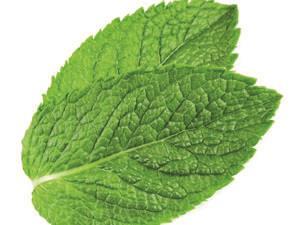Meera Senthilingam
This week, we toast with compounds and cocktails. Raising his glass is Simon Cotton.
Simon Cotton
When it comes to horse racing, Britain has the Derby at Epsom, America has the Kentucky Derby. Like the Epsom Derby, the Kentucky Derby is a race for three year olds, but in spite of having almost 100 years more history, the British race does not have a drink to go with it.
The drink to have at the Kentucky Derby is the mint julep. It is made by mixing together powdered sugar, water and mint leaves in a glass, filling it with crushed ice, adding bourbon and topping it with a sprig of mint, though each bartender has their own personal style, their own take on it. And the result is the epitome of the Deep South.

The main molecule associated with mints is menthol. Its proper name is 2-isopropyl-5-methylcyclohexanol. Because it contains three chiral carbon atoms, there are four pairs of optical isomers of this molecule. Menthol is one pair of isomers, the others are known as neomenthol, isomenthol and neoisomenthol.
Only one optical isomer of menthol is made by mint plants, and that is the (1R,2S,5R) version, although the mirror-image isomer can be made in the lab. It has the same melting point and solubility as the natural form, but does have a slightly different smell. The smell receptors in our noses are made of amino acids, all but one of which are chiral, so they interact differently with optical isomers, which often leads to distinctly different ‘smell messages’ going to the brain.
Whilst the natural isomer of menthol has an odour that has been described as ‘fresh, sweet, minty, cooling, refreshing’, the totally synthetic isomer has a smell that is similar but less minty, more herby, with ‘musty, bitter, phenolic and herbaceous notes’. It is less refreshing, and also has about one quarter of the cooling power of the natural isomer.

Although much of the commercially available menthol is still obtained from mint, the synthetic version is increasingly being used. The Takasago corporation in Japan makes three thousand tons a year from the naturally occurring hydrocarbon myrcene, itself largely obtained by pyrolysis of pinene. Ryoji Noyori, 2001 Nobel laureate in chemistry, invented a special chiral catalyst involving rhodium for this process. The reaction creates one single isomer of citronellal in higher purity than the natural material, and this is then turned into single-isomer menthol.
Menthol is used for all sorts of things, most obviously to flavour substances like chewing gum, sweets and other food products. The cooling sensation that it produces means it finds its way into medications for minor complaints like lip balm and decongestants, as well as cough mixtures, mouthwashes and toothpastes, plus treatments for muscular pains and strains.
If molecules were people, menthol would be Arthur Herbert Fonzarelli. So cool.
But menthol doesn’t actually cool you - it just makes you feel cooler. How menthol produces a cooling sensation is something that has only been explained within the last decade. Menthol binds to a particular receptor site on sensory neurons, known as the TRPM8 receptor. This opens a pore, causing calcium ions to move into the cell, generating an action potential which sends a message to the brain.
It so happens that part of that receptor also responds to ‘cool’ temperatures, 20°C or less, which also sends the same message to the brain. The brain cannot distinguish between the causes, so menthol feels ‘cool’. Another receptor, known as TRPV1, responds to capsaicin, the chilli pepper ingredient, and to temperatures above 43°C, so chillies - and curries - feel ‘hot’. Channels like this are critical in our bodies’ perception of hot and cold, enabling us to avoid dangerous hot and cold conditions.
Many sportsmen chew mint-flavoured gum, not least footballers and their managers. There may be real reasons why they find this beneficial. In research published in 2004, Professor Bryan Raudenbush of Wheeling Jesuit University in West Virginia reported experiments carried out on athletes on a treadmill. He found that inhaling peppermint odour elevated oxygen uptake and also boosted their mood; these athletes felt they were making less effort and experiencing less frustration than control groups.
These results were in keeping with similar studies on basketball players which showed that inhaling peppermint made them run faster and perform more press-ups (though it does not seem to improve their aerobic capacity). It looks as if more studies may be needed to see if there is improvement in performance as well as mood, but already an enterprising American firm markets a peppermint sports inhaler. Another stick of gum, Sir Alex?
Meera Senthilingam
So don’t forget the menthol when you go for that run. Birmingham University’s Simon Cotton there, with the deceivingly cool chemistry of menthol. Next week, we add some colour.
Brian Clegg
Think of the colour yellow. It brings to mind the sun, egg yolks, positive warm feelings. It is very much an affirmative colour, but not one that is always easy to produce. In chemistry, yellow is not unheard of - sulfur springs to mind immediately - yet a good strong yellow is rare enough to comment on, and cadmium sulfide delivers it with bells on.
Meera Senthilingam
And discover the uses of this vibrant compound to both artists and industry by joining Brian Clegg in next week’s Chemistry in its Element. Until then, thank you for listening. I’m Meera Senthilingam.













No comments yet